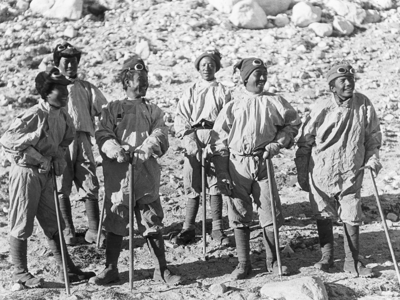In 1924, the British Mount Everest Expedition set out to summit the world’s highest mountain. The attempted ascent would go on to cement a global public fascination with the peak that endures to this day. However, narratives of the expedition have often centred on Western viewpoints.
To mark the centenary of the expedition, a new Society book, Everest 24: New views on the 1924 Mount Everest Expedition, has been released. Everest 24 sheds light on the wide range of stories and contributions revealed by the Society’s vast collection of photographs, films, artefacts and archival documents related to the expedition, and highlights recent research examining the roles of the people and communities of India, Tibet and Nepal.
Jamie Owen, the book’s consulting editor and Image Licensing Manager at the Society, said: “While the Everest expeditions of the 1920s are often cast as Western men battling against the unknown in testing climatic conditions, this is far from the only narrative shown by the Society’s archive”.
The book features a newly-curated selection of original photographs taken during the expedition – including hand-coloured lantern slides by John Noel, the expedition cinematographer, and rarely seen black and white photographs – as well as contemporary maps of the region, correspondence from the expedition, and a selection of images of fascinating artefacts.
From breathtaking photography to incredible stories of ingenuity, scientific innovation and perseverance, there is something for everyone.
Copies of the book are available to buy through Stanfords and all good bookshops, as well as in person at the Society. Society members receive a 10% discount at Stanfords. To coincide with the release of the book, a free exhibition of photographs, maps, and original artefacts from the three 1920s expeditions is open now at the Society until 11 June.



